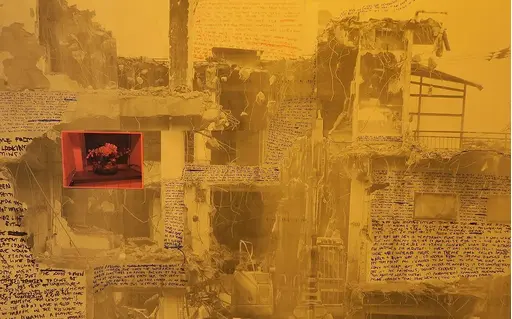
13 November 2021
Music as Spectral Infrastructure: Day One
Day one as part of the two-day program Music as Spectral Infrastructure, part of Le Guess Who? 2021, reflects on the present and historical state of electronic music, looking at how it registers traces and resistances to the corporate and statist drives while structuring collective musical and sonic desire.
Program day one
14.00–14.15 hrs Introduction
Louis Moreno (member of freethought and lecturer in the Department of Visual Cultures, Goldsmiths, University of London, London)
14.15–15.30 hrs
India Tapes (1969–1972)
Paul Purgas (artist and musician)
Presentation and conversation with music
The opening session explores the life and afterlife of early experiments in electronic music produced at the National Institute of Design in the city of Ahmedabad, Western India in the 1960s and 1970s. The presentation and conversation revolves around Paul Purgas’s archival research into India’s first electronic music studio and how we can think of the studio as a form of spectral infrastructure.
15.30–17.00 hrs
Music for Airports, Playlists, and Other Rent-Seeking Platforms
Paul Rekret (researcher and teacher) and Ollie Zhang (writer, editor, curator and musician)
Presentations and conversation with music excerpts
This session discusses the consumption and production of electronic music today, and how music has become both an ecological system and a new personalized frontier for digital capital.
Paul Rekret and Ollie Zhang consider the financial and digital infrastructures that use music as a means to curate and segment collective forms of sonic desire. What kind of spectral infrastructure can resist these systems?
—
17.00–17.15 hrs
Break
[b]17.15–18.00 hrs
Radical Spectrality: Solstice 93
Laura Grace Ford [/b]
Listening session for a new sound work by Grace Ford, Solstice 93
A new sound work by Laura Grace Ford, articulating what Grace Ford calls “social forms of radical spectrality,” which haunts and resists the spatial apparatuses of urban gentrification and policing.
Louis Moreno (member of freethought and lecturer in the Department of Visual Cultures, Goldsmiths, University of London, London)
14.15–15.30 hrs
India Tapes (1969–1972)
Paul Purgas (artist and musician)
Presentation and conversation with music
The opening session explores the life and afterlife of early experiments in electronic music produced at the National Institute of Design in the city of Ahmedabad, Western India in the 1960s and 1970s. The presentation and conversation revolves around Paul Purgas’s archival research into India’s first electronic music studio and how we can think of the studio as a form of spectral infrastructure.
15.30–17.00 hrs
Music for Airports, Playlists, and Other Rent-Seeking Platforms
Paul Rekret (researcher and teacher) and Ollie Zhang (writer, editor, curator and musician)
Presentations and conversation with music excerpts
This session discusses the consumption and production of electronic music today, and how music has become both an ecological system and a new personalized frontier for digital capital.
Paul Rekret and Ollie Zhang consider the financial and digital infrastructures that use music as a means to curate and segment collective forms of sonic desire. What kind of spectral infrastructure can resist these systems?
—
17.00–17.15 hrs
Break
[b]17.15–18.00 hrs
Radical Spectrality: Solstice 93
Laura Grace Ford [/b]
Listening session for a new sound work by Grace Ford, Solstice 93
A new sound work by Laura Grace Ford, articulating what Grace Ford calls “social forms of radical spectrality,” which haunts and resists the spatial apparatuses of urban gentrification and policing.
Music as Spectral Infrastructure Music as Spectral Infrastructure: Day TwoMusic as Spectral Infrastructure: Day One